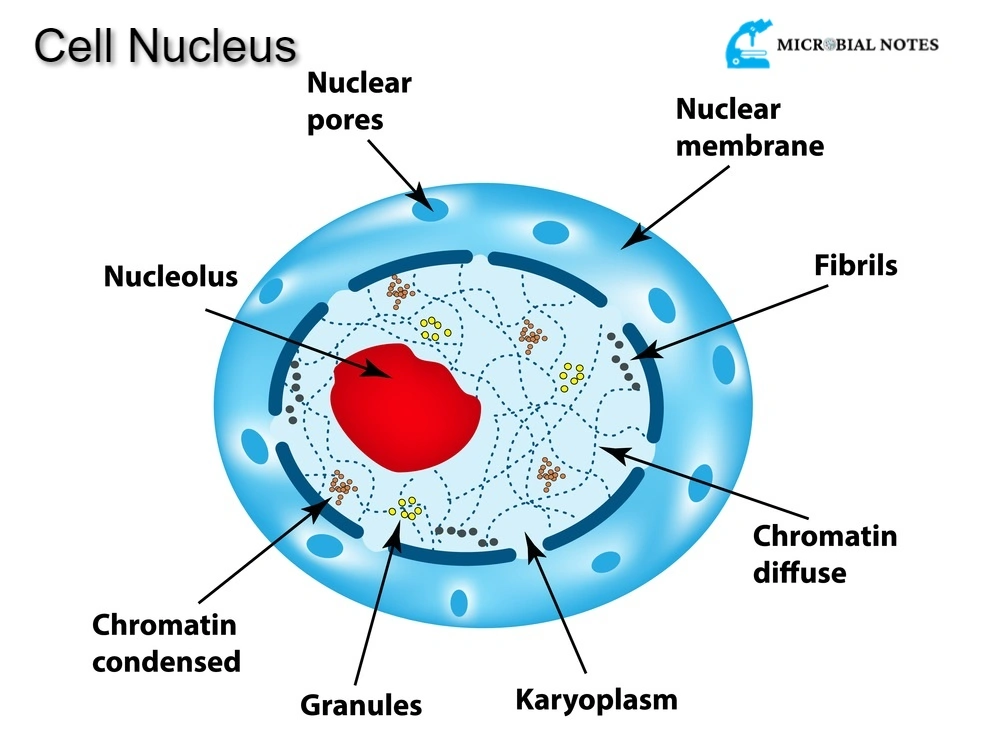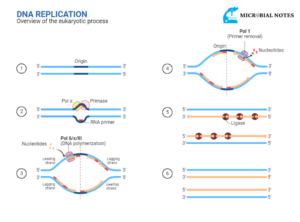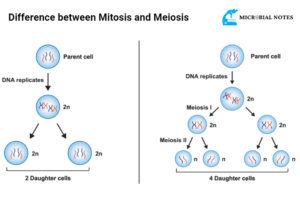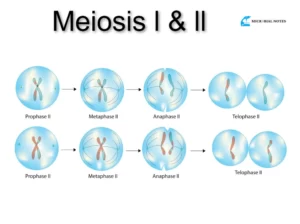Introduction and history of the nucleus:
The red blood cells of other vertebrates still have nuclei, in contrast to those of mammals. Robert Brown, a Scottish botanist, described the nucleus in greater detail in a discussion he gave to the Linnean Society of London in 1831. Franz Bauer also described the nucleus in 1804.
The chromosome containing, a large nucleus is a double membraned organelle, that carries the genetic material, and is frequently referred to as the “central unit” of the cell. It is absent from prokaryotic and purely eukaryotic cells. Inside the nucleus, in addition to the chromosomes, are other structures known collectively as nuclear bodies. Nucleoplasm refers to the fluid that makes up the nucleus.
What is the nucleus structure?
- It is usually the cell organelle that can be viewed the easiest under a light microscope. The nucleus is completely enclosed by membranes.
- The framework that surrounds it is known as the nuclear envelope, and a membrane separates the nucleus’s contents from the cytoplasm.
- It also contains the chromosomes of the cell.
- The genetic information required for the synthesis of numerous cell components as well as for the reproduction of life is provided by the chromosomes, which include DNA.

Describe how the nucleus works.
- It regulates the cell’s growth and reproduction and holds genetic information.
- The genetic makeup of a cell is contained in the nucleus, which has been explained in detail as a membrane-bounded structure.
- In addition to serving as a DNA storage space, it also serves as the location of various significant cellular functions.
- One’s DNA can be duplicated first and mainly in the nucleus. The process of making an identical copy of the DNA is called DNA replication.
- Cell division begins with the creation of two identical copies of the body or host, with each new cell receiving a unique set of instructions.
- The second is that transcription occurs in the nucleus. Different RNA types are produced by transcription from DNA. Making copies of individual pages of the instructions for the human body that may be moved outside of the cell and read by the rest of the body is analogous to transcription.
- DNA gets transcribed into RNA, and then into proteins, according to the fundamental biological principle.
Explain parts of the nucleus.
The eukaryotic nucleus is an organelle with two membranes. The nuclear body, nuclear bodies, nuclear matrix, nucleoplasm, and nuclear envelope are its three primary parts, together with the nucleolus and other chromatins (chromosomes).
Chromosomes/Chromatin:
Chromatin is a grouping of nucleic acids (such as DNA or RNA) and proteins (such as histones). The chromatin condenses into a chromosome during cell division. A nucleosome is the fundamental structural component of chromatin. A DNA segment is looped around the histone protein cores to form a nucleosome.
Chromatin’s primary job is to compact DNA into a smaller volume so that it can fit within a cell. The two main types of chromatin are heterochromatin and euchromatin. The heterochromatin is more compacted and consequently less active, whereas the euchromatin is structurally free to allow transcription and replication.
Nuclear DNA:
The majority of the cell’s genome is made up of nuclear DNA; the remaining minor portion is made up of extranuclear DNA found in the mitochondria and/or chloroplasts. Extranuclear DNA refers to DNA that is found outside of the nucleus.
Since there are several chloroplasts and mitochondria but only one nucleus typically inside a cell, extranuclear DNA, such as cpDNA in chloroplasts and mtDNA in mitochondria, appears in multiple copies. As a result, a cell would typically have thousands of copies of both cpDNA and mtDNA. Histones condense nuclear DNA into chromatin structures, whereas mtDNA and cpDNA do not.
Nuclear Bodies:
A nuclear body is a primarily proteinaceous, non-membrane structure found in the nucleus. The nucleolus is thought to be one of the nuclear entities and is the most noticeable, as was already noted above. It is distinguished by the appearance of spherical granularity. Its primary purpose is to aid in the production of ribosomes, which are essential for the production of proteins.
The Cajal bodies and gems (Gemini of Cajal bodies), PIKA domains, promyelocytic leukemia protein (PML) bodies, splicing speckles, paraspeckles, per chromatin fibrils, and schistosomes are other nuclear bodies. Type I and Type II are simple nuclear entities and complicated nuclear bodies (type III, type IVa, and type V).
Nuclear Matrix:
The cytoskeleton found in the cytoplasm of the cell is comparable to the nuclear matrix. This fibrillar network structurally supports the size and form of the nucleus. However, compared to the cytoskeleton, the nuclear matrix is more dynamic. The nuclear lamina is a part of it.
Nucleoplasm:
Similar to how cytoplasm is used to describe the remainder of the cell, the term “nucleoplasm” describes the protoplasm of the nucleus. The nuclear envelope encloses the numerous components of the nucleoplasm, such as chromosomes, nuclear bodies, and nuclear matrix. A nucleosol is a term used to describe the fluid portion of the nucleoplasm (just as the cytosol to the cytoplasm).
Nuclear Envelope:
The biological membrane encircles the nucleus is known as the nuclear envelope (sometimes referred to as a nuclear membrane). The nuclear membrane is a bilipid layer, like a cell membrane. Thus, in terms of controlling the entry and departure of materials, the nuclear membrane serves a similar purpose to a cell membrane. for more in detail visit Nuclear Envelope: Its structure and functions
Nuclear pores in the nuclear envelope regulate the flow of molecules between the cytoplasm and nucleoplasm. Large molecules cannot pass through it. As a result, it divides the nucleus’ contents from the cellular cytoplasm and permits specific molecules to enter. Large molecules (such as proteins and RNAs) are transported passively through the nuclear envelope by carrier proteins, whereas tiny molecules and ions are transported actively via the nuclear envelope.







